Crafting Timeless Bitters: An Old Fashioned Recipe
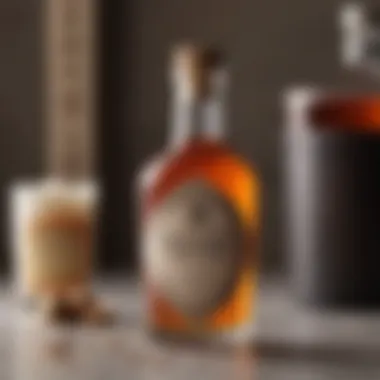
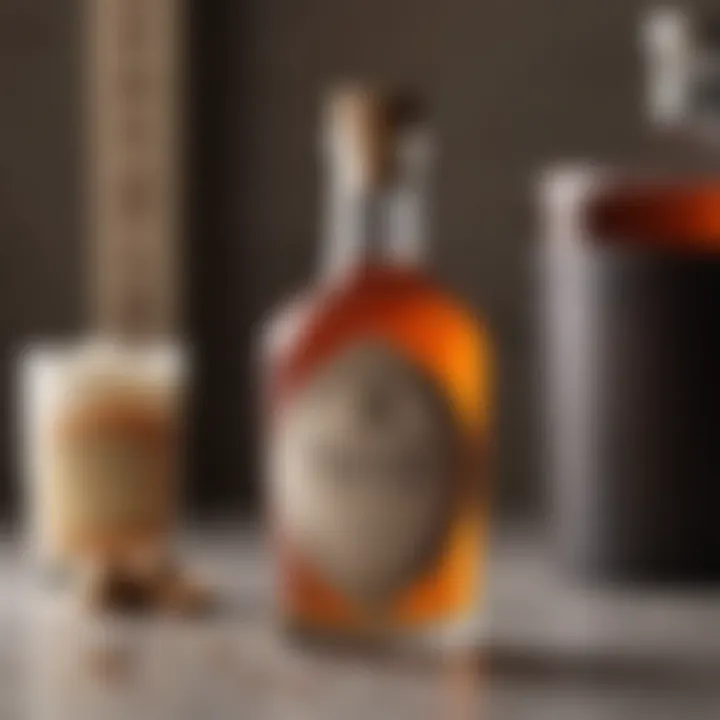
Recipe Highlight
The old fashioned bitters, known simply as bitters, add a sophisticated touch to cocktails, especially renowned classics like the Old Fashioned. Imagine pouring a dash of these aromatic concoctions into your drink, instantly elevating its flavor profile.
Essential Ingredients
- High-proof alcohol (like Everclear or vodka)
- Dried herbs and spices (choose from orange peel, cinnamon, and whole cloves)
- Roots and barks (gentian root is a favorite)
- Sweeteners (consider raw sugar or honey)
- Fruit extracts (such as cherry or bitter orange)
Estimated Time to Prepare
Creating your own bitters will take about 2 to 4 weeks, with 30 minutes of active prep time. The real magic happens as they steep.
Yield
This recipe will yield approximately 2 cups of homemade bitters, a generous amount for your upcoming cocktail adventures.
Step-by-Step Instructions
- Gather Your Ingredients: Ensure you have all the required items, and measure them accordingly.
- Combine Ingredients: In a mason jar, mix your high-proof alcohol with the selected dried herbs and spices. Use about 1 cup of alcohol for every 1-2 tablespoons of herbs.
- Add Roots and Barks: Incorporate gentian root or other assorted barks to bring a distinctive flavor.
- Sweeten the mixture lightly with your choice of sweetener, adjusting to taste.
- Seal and Shake: Secure the lid tightly and give the jar a good shake to mix everything harmoniously.
- Steep: Place your jar in a cool, dark spot. Let the mixture steep for at least two weeks, giving it a gentle shake every couple of days.
- Strain: After the steeping period, strain the mixture through a cheesecloth or a fine mesh strainer into another jar to remove solid bits.
- Bottle and Store: Transfer your clear liquid into smaller bottles for easy storage.
Tip: Experiment with the steeping time. A longer steep will yield a more robust flavor.
Variations and Substitutions
Feeling adventurous? Here are some possible twists:
- Substitute Your Base: While high-proof alcohol is traditional, consider using apple brandy for a different essence.
- Different Flavors: Try incorporating lavender or peppermint for a refreshing variation.
- Crafty Combinations: Mix citrus zests for an added zing or try vanilla pods for a sweetened tone.
Time-Saving Cooking Tips
- Batch Prep: Make a larger quantity at once. This way, your bitters are ready when friends come over for cocktails.
- Organize Your Workspace: Lay out all ingredients clearly to minimize time spent searching.
- Use a Food Processor: For herbs and spices, pulse them to a uniform consistency quickly.
Nutritional Information
Though bitters are not a meal, they contain minimal calories, around 5 calories per dash. The inclusion of herbs can offer minor digestive benefits, making them intriguing despite their small serving size.
In terms of dietary suitability, bitters can generally fit into various diets. However, be cautious with sweeteners if you're managing sugars or carbs.
Prelude to Old Fashioned Bitters
In the realm of cocktail artistry, old fashioned bitters hold a prestigious place. These concentrated flavor enhancers are not just afterthoughts; they are vital components that distinguish a well-crafted cocktail from a mediocre one. When mixing a classic cocktail like the Old Fashioned, bitters are instrumental in elevating the flavors, balancing the sweetness, and adding depth to the drink's profile. This section delves into the significance of bitters, especially in an Old Fashioned.
Understanding Bitters in Mixology
Bitters, by definition, are a form of aromatized alcohol infused with various botanical elements, typically herbs, roots, and spices. Their primary function is to impart a mix of flavors ranging from bitter to aromatic. In mixology, they serve as a secret weapon in the bartender's toolkit.
Consider them the seasoning in a savory dish; without that pinch of salt, even the finest ingredients can fall flat. While some may overlook bitters, those in the know understand their essential role in creating balance. They can cut through the rich sweetness of sugar in cocktails or bring harmony to the blend of spirits.
It’s common to see a few dashes of aromatic bitters in many classic cocktails, serving as a bridge that ties together various flavors. For instance, Angostura bitters, perhaps one of the most recognized brands, has found its way into countless recipes, each time bringing an extra layer of complexity. As you begin to craft your own bitters, you'll soon appreciate the myriad of flavors they offer—think of floral notes, citrus zest, or even spicy undertones.
The Role of Bitters in the Old Fashioned Cocktail
The Old Fashioned is arguably a foundational cocktail, often seen as the benchmark for cocktail-making. At its core, the Old Fashioned combines whiskey, sugar, and bitters, typically served over ice with a citrus peel garnish.
Here, bitters carry not only the essential function of flavor enhancement but also contribute to the cocktail’s stability. As the drink is stirred, the bitters mingle with the sweet and spirit components, creating a unified taste experience rather than disparate flavors. And it’s that first sip that reveals the magic of well-balanced bitters. Without the bitters, one risks ending up with a overly sweet concoction that lacks depth.
In essence, the bitters work hand-in-hand with the other ingredients, creating a symphony of flavors rather than a solo performance. The complexity they lend ensures that the Old Fashioned is not merely a drink, but an experience.
"A dash of bitters can transform an ordinary drink into something extraordinary, capturing the spirit of mixology."
In summary, understanding the role of bitters in crafting an Old Fashioned isn't just about following a recipe; it's about appreciating an art form. As we move forward in this guide, we will explore the intricate details about ingredients, methods, and techniques that will help you master the craft of bitters, ultimately leading to an even better Old Fashioned.
Historical Significance of Bitters
Bitters have traveled through time, leaving their mark on the fabric of cocktail culture. Their presence in mixology isn’t just about taste; it’s a testament to how ingredients can shift roles over centuries, from medicine to culinary delight. Understanding the historical significance of bitters sheds light on their evolution and necessity in crafting drinks like the Old Fashioned.
Origins of Bitters
Early Medicinal Uses
The roots of bitters can be traced back to their initial use as medicinal remedies. Ancient civilizations, including Egyptians and Greeks, recognized the advantages of bitter herbs. These concoctions were not only believed to aid digestion but also to cure various ailments. It’s fascinating to see how these practices laid the groundwork for what we know today.
Key characteristic: Bitters were often infused with herbal roots and spices, creating potent potables intended for health benefits. This choice of ingredient was not merely for flavor but for the belief that bitters held healing properties. For instance, many early bitters were comprised of ingredients such as gentian root and cinchona bark, known for their digestive benefits.
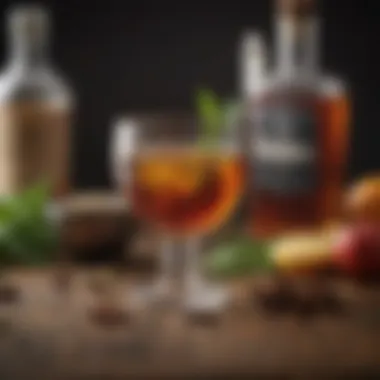
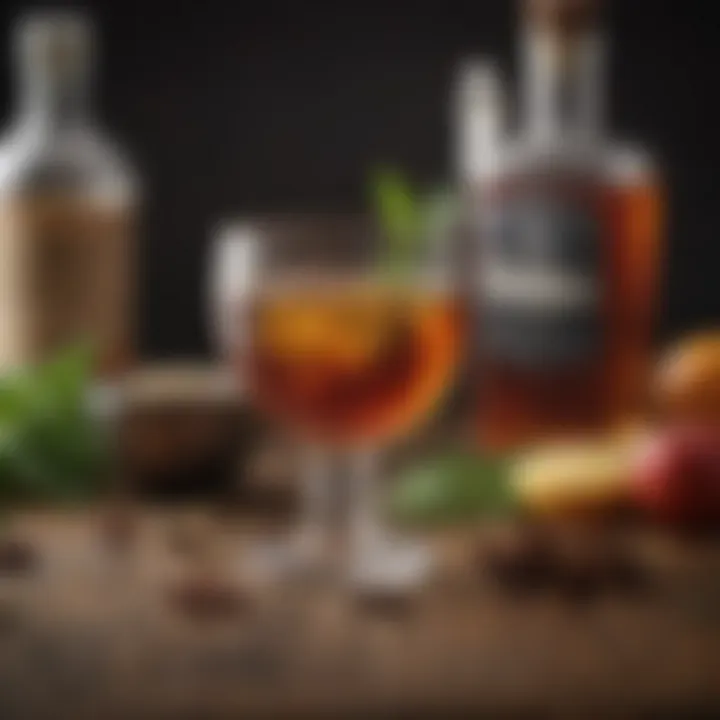
While it might seem outdated now, this early use of bitters set the stage for their transition into the cocktail scene.
Unique feature: The blend of botanicals provided distinct flavors, making them appealing even beyond their intended health purposes. The balance between aroma and flavor indeed makes bitters a unique addition to drinks, including the Old Fashioned.
Evolution into Culinary Ingredient
As tastes evolved, so did the perception of bitters. They transitioned from purely medicinal to a culinary necessity in bars and kitchens. This evolution was pivotal in recognizing bitters as a harmonious element in cocktails rather than just a health tonic.
Key characteristic: This change emphasizes how bitters started to be used for flavor enhancement in beverages, combining various elements to achieve an exquisite taste. The sentiment of bitters being an afterthought in cocktails has shifted.
Unique feature: The range of flavors now available—spicy, fruity, or herbal—enables barmen and at-home mixologists to creatively explore flavors.
Bitters in Classic Cocktails
Classic cocktails are synonymous with bitters. The role they play is crucial and it extends beyond mere flavoring. Bitters provide depth, complexity, and a fine balance that elevates the drink.
Signature Cocktails Featuring Bitters
Bitters are the undercurrent in many signature cocktails, with the Old Fashioned being a prime example. This particular cocktail showcases how a few dashes of bitters can transform a simple mix of whiskey and sugar into a deeply nuanced experience.
Key characteristic: They enhance the overall profile of the drink, giving it a richness that wouldn’t be present without them. The bitters' ability to amplify flavors makes them essential.
Unique feature: Some cocktails, like the Manhattan and Sazerac, would be incomplete without their signature bitters. The unique character of each cocktail lies in the bitters used, making this aspect critical for cocktails connoisseurs.
Cultural Impact on Drinking Trends
The resurgence of bitters is much more than a trend; it’s a cultural phenomenon reflecting a growing appreciation for craft cocktails. Bars and home mixologists alike are turning to these old remedies to create new experiences.
Key characteristic: Bitters signify a shift towards quality over quantity in drinking culture. This evolution not only promotes experimentation but also supports local distilleries and producers.
Unique feature: This cultural inclination has helped nurture a community of enthusiasts and makers who take pride in crafting bitters, preserving traditional methods while introducing modern twists.
"The humble bitter is the backbone of countless cocktails, weaving stories through taste that span generations."
Bitters represent a connection to the past and a bridge to innovation in cocktail crafting. Understanding their historical significance enriches the experience of making and enjoying an Old Fashioned.
Essential Ingredients for Old Fashioned Bitters
Creating bitters for an Old Fashioned cocktail is not just a simple task, but rather an art that demands careful selection of ingredients. The ingredients you choose are the backbone of your bitters, shaping the flavor profile and sensory experience of your finished product. Understanding why each element matters can elevate your cocktail-making from mundane to exquisite.
Base Spirits and Alcohol Choices
Types of Base Spirits
When it comes to crafting bitters, the choice of base spirit is crucial. Traditionally, bourbon or rye whiskey is favored for an Old Fashioned, each imparting distinct characteristics. Bourbon, with its sweet vanilla and caramel notes, brings warmth and richness, while rye offers a spicier, more robust flavor. This decision can influence the final taste in a big way.
Another option is to use neutral spirits, like vodka. While it may not contribute much to the flavor, it offers a blank canvas that lets your herbs and spices shine through. This flexibility can be quite beneficial when experimenting with unconventional flavors.
In summary, think of your base spirit as a stage upon which the performance of flavors takes place. Choosing the right one can enhance the entire experience.
The Importance of Alcohol Proof
Alcohol proof is more than just a number; it affects the extraction of flavors from the ingredients. Generally speaking, a high-proof spirit—around 100 proof or more—extracts flavors more effectively, giving your bitters a deeper, more pronounced character. However, it's essential to balance this with drinkability.
Using a spirit with a lower proof can create a smoother, more approachable bitters, but it might dilute some flavor potential. Hence, tailoring the proof to your personal taste is a wise approach. Strong alcohol can also help preserve the bitters for longer, increasing shelf life.
Flavoring Agents and Botanicals
Common Herbs and Spices
Herbs and spices form the heart of bitters. Bittering agents, like gentian root, are traditional yet essential. Gentian, with its earthy and herbal qualities, anchors the flavor profile, making it a must-have also for other cocktails. Other spices like cardamom or cinnamon can also add a warm, aromatic complexity. These ingredients can change the personality of your bitters entirely, moving it from floral to spice-heavy with just a pinch.
Selecting the right mix of herbs and spices will provide layers of flavor, making each sip of your Old Fashioned an aromatic adventure.
Citrus Zests and Peel Contributions
Adding citrus zests, such as orange or lemon, introduces the bright, refreshing notes that can cut through the richness of the spirits. Citrus peel can uplift the bitters, providing an additional dimension to the flavor profile that many find appealing. The aromatic oils in the zests contribute a lively and bright character, which contrasts nicely with the bitter elements.
An advantage of zesting is its versatility; you can experiment with different citrus varieties to achieve unique flavors that dance on the palate. However, be cautious, as too much can overpower the bitterness, leading to an unbalanced end product.
Sweeteners and Additional Ingredients
Selecting the Right Sweetener
Sweeteners play a vital role in masking the harshness of the bitter elements and balancing overall flavor. Common choices include simple syrup, which offers a neutral sweetness, or alternatives like maple syrup or honey, which bring their distinct flavors into the mix. Each sweetener can impart a different weight and body to your bitters, so it's worth experimenting.
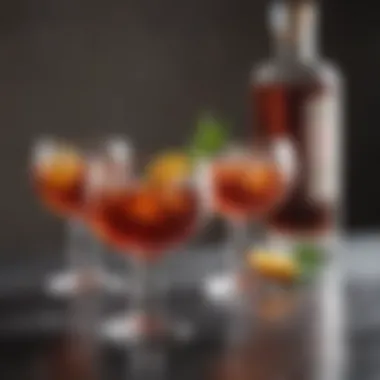
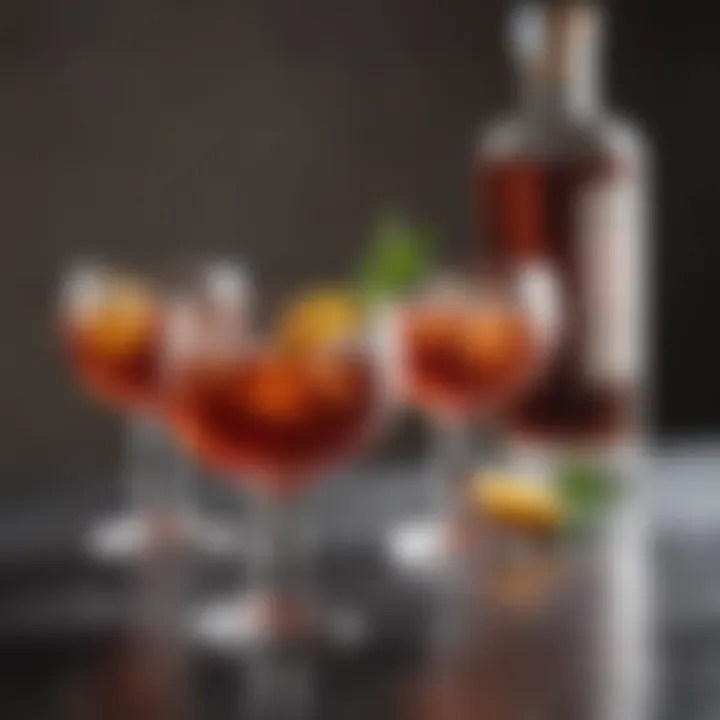
The key is to find a sweetener that complements your chosen base spirit and flavor profile without overpowering the bitterness. It’s a dance of flavors, requiring your delicate touch and palate.
Other Flavor Enhancements
Beyond the usual suspects in bitters-making, consider experimenting with additional flavor enhancers. A touch of vanilla bean, for example, can add a comforting warmth, while a hint of anise can introduce an intriguing layer. These enhancements can enrich your bitters and make them stand out.
Just remember, less is often more. Introducing too many elements can complicate rather than enrich, my dear friend.
In crafting bitters, always keep your audience in mind. What do they enjoy? Balancing their preferences with your intended creation is vital.
Putting thought into these essential ingredients not only adds depth to the bitters itself but also improves the final Old Fashioned your patrons will enjoy. Each selection should reflect your personal touch and a keen understanding of how flavors interact.
Step-by-Step Process for Creating Bitters
Creating bitters at home is a delightful journey into the heart of mixology. The methodical approach not only ensures a quality product but also allows one to experiment and personalize flavors. This process stands as a crucial element when looking to master the art of bitters, particularly for an Old Fashioned cocktail. Bitters are the seasoning of cocktails, transforming a simple drink into an experience worthy of any tasting menu. They are complicated enough to warrant attention but accessible enough that anyone willing can plunge into the crafting realm.
Preparation of Ingredients
Measuring and Sourcing Ingredients
When it comes to measuring and sourcing your ingredients, precision is key. The craft of creating bitters lies in the balance of flavors. Each herb, spice, or fruit peel holds the potential to alter the drink's profile significantly. Sourcing fresh and high-quality ingredients is equally important, as they define the essence of your bitters. Going for dried herbs or older spices? You might miss that fresh zest that can elevate your concoction.
Unique here is the ability to customize your batches. Finding local markets or specialty shops can yield unique botanicals not found in common grocery stores. For instance, some are galloping to their local herb shop to grab elusive ingredients like gentian root or bitter orange peel just for that extra punch in flavor. But while local sourcing can seem appealing, it can also limit one's availability, depending on geographical location. So, scope out online retailers as well for a wider selection.
Tools Needed for Preparation
A handful of simple tools can make all the difference when preparing bitters. From glass jars to measuring spoons, having these essentials at the ready makes the incremental steps feel manageable. A funnel obviously comes in handy when bottling, but high-quality strainers or cheesecloth allow for the removal of solid ingredients without leaving any residue behind. Preventing sediment in your finished product also means a more aesthetically pleasing bottle and a smoother drink.
Moreover, investing in some glass dropper bottles lets you control the quantity of bitters going into each cocktail, thereby amplifying or diminishing bitters' effect in your drinks. Quality tools are beneficial in ensuring consistency from batch to batch, leading to a reliable outcome every time you whip up a cocktail.
Infusion Techniques
Cold Infusion Method
The cold infusion method stands out because of its gentler approach to flavor extraction. Soaking your botanicals in high-proof alcohol creates a more nuanced flavor profile, enhancing the delightful subtleties of each ingredient. This method requires patience, with a steep time ranging from a few days to several weeks.
This long infusion period allows for flavors to marry beautifully, ensuring that the final product isn't too overpowering. A distinctive feature of the cold method is the ability to experiment with delicate herbs that require less heat to yield their flavors, keeping them fresh and vibrant. However, the waiting game can also deter some who may want instant gratification. But when patience pays off, the result is often worth the wait.
Heat Infusion Method
Conversely, the heat infusion method accelerates the process but can be a tricky endeavor. Heating your alcohol while adding ingredients can extract flavors rapidly, allowing for a bitters batch in a fraction of the time. The key characteristic here is the spontaneity; it's perfect for those who are in a hurry or want to experiment without a long time commitment.
Yet, there’s a caveat. The heat can sometimes extract bitter compounds too aggressively, thus leading to an unwanted taste profile that may not sit well in your cocktails. Understanding this risk is crucial; heat infusion can both open opportunities and shut doors depending on your approach. Think carefully about which ingredients you're using with this method, as some may fare better when treated gently.
Filtering and Bottling
Techniques for Proper Filtration
Getting it through filtration in a flawless manner is another vital aspect of bitters-making. Straining your infused liquid correctly retains the flavors while ensuring unpleasant solids don’t make their way into the final product. Using a fine mesh strainer or a coffee filter can yield a clear liquid, ideal for finishing the job cleanly.
The magic lies in patience during this step; a rushed filtration can leave particulates. A crucial characteristic of a good filter is the capacity to separate complex flavor compounds without losing the essence of what you created. However, be prepared for a slower process than expected—better safe than sorry! And when executed properly, the result is a crisp, clear bitters ready for bottling.
Choosing the Right Bottles
The final step is selecting the right bottles for your bitters. Dark glass bottles are a popular choice because they shield the contents from light exposure, thereby prolonging freshness. It’s often wise to invest in high-quality glass, as lesser materials may leach chemicals into your bitters over time.
An added advantage of nice bottles is they can be part of the aesthetic. When placed alongside beautifully mixed cocktails at your bar, these bottles tell a story—your story of bitterness enchantment. Nevertheless, aesthetic choice should remain practical; functionality shouldn't take a back seat. Ensure the chosen bottles have tight seals, as optimal storage conditions hinge on maintaining an airtight environment to preserve your homemade creation.
In summary, creating bitters is a refined process that requires attention to detail in every step. From the careful measuring of fresh ingredients, through the infusion and filtration techniques, to choosing aesthetically pleasing but practical bottles. The results are not just a unique kitchen project, but crafted flavors that elevate your Old Fashioned recipes and beyond.
Storing and Aging Your Bitters
When it comes to creating your own bitters, the process doesn’t end once the liquid has been bottled. The storage and aging of your bitters play a crucial role in how they develop flavor and overall character. Much like fine wine or whiskey, bitters can benefit greatly from a little time. Not only does this give their mingling flavors a chance to mature, but it also can influence how they perform in cocktails.
Understanding Bitters Shelf Life
Bitters are quite resilient by nature. They are a concentrated infusion of various herbs, spices, roots, and alcohol, which gives them a relatively lengthy shelf life. Properly stored, bitters can last for several years without significant degradation. However, over time, the flavor profile may shift, and this is something you should keep in mind as you use your homemade concoction.
To keep your bitters tasting their best, it’s wise to keep track of when you bottled them; label your bottles with the date of creation. And while you might win in terms of endurance, the quality reflects best when consumed within the first two to three years.
Optimal Storage Conditions
Temperature Considerations
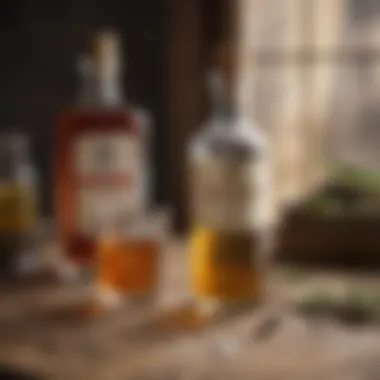
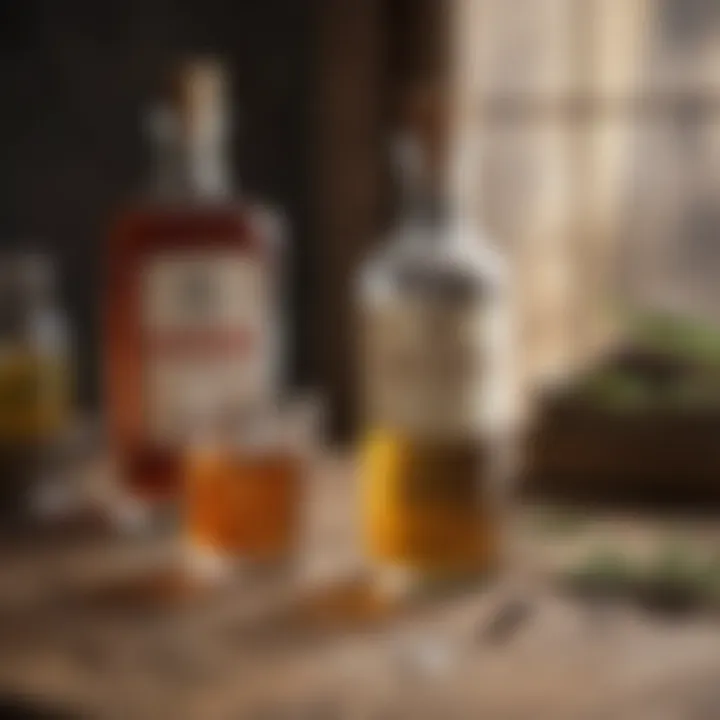
One of the most vital factors in preserving your bitters is the temperature at which they are stored. Ideally, you want to keep them in a cool, dark place. Extreme heat can lead to evaporation of the alcohol, altering the balance of flavors. A calm temperature also helps to maintain the integrity of the ingredients infused into the bitters. The key characteristic here is stability. Consistent temperatures prevent any unwanted fluctuations that might contribute to spoilage or unwanted reactions.
It’s beneficial to store bitters in a temperature-controlled environment, such as a pantry away from heat sources like stoves. On the flip side, freezing is not recommended, as it can cause the bitters to become cloudy and change in texture.
Minimizing Light Exposure
Another key aspect to consider is light exposure. Bitters are sensitive to light, with UV rays known to break down certain compounds, potentially leading to a dull and flat flavor. Minimizing light exposure ensures that your bitters retain their intended complexity and vibrancy longer.
A dark glass bottle or a bottle stored in a cupboard or drawer can help shield your bitters from harmful light. This unique feature provides a clear advantage in preserving quality over time. Just as sunlight can fade a painted canvas, it can also dull the flavors of your bitters.
"Store your bitters in a dark place to keep their flavor alive. Light can dull even the boldest of characters."
Utilizing Your Homemade Bitters
Making your own bitters is more than just a fun project; it’s about incorporating a personal touch into your cocktails and culinary endeavors. Utilizing homemade bitters opens a gateway to creativity, allowing you to customize flavors that suit your palate. This section dives into the multifaceted benefits of using these liquors, exploring how the unique combinations can elevate your drinks and dishes.
Incorporating Bitters into Cocktails
A well-crafted cocktail often hinges on the thoughtful inclusion of bitters, which can bring complexity and depth to even the simplest of drinks.
Classic Old Fashioned Recipe
The Classic Old Fashioned is sometimes considered the granddaddy of all cocktails. Its simplicity is its magic; whiskey, sugar, water, and bitters come together to create a truly iconic drink. The bitters not only enhance the whiskey’s rich, oaky flavors, but they also provide a counterbalance that rounds out the sweetness of the sugar.
This recipe shines because it leans on the characteristic of bitters to create balance. By choosing different types of homemade bitters—like orange peel infused or aromatic—mixologists can adjust the liquor's taste profile to match their preference perfectly. This adaptability makes the Old Fashioned a popular choice for enthusiasts in this article.
One unique feature of this recipe is its versatility. Depending on the type of whiskey you choose, the flavor can shift dramatically. While it tends to favor bourbon, using rye or even a single malt whisky can lead to surprising results. However, it’s essential to remember that an overpowering bitters ratio can overshadow the other ingredients if not carefully measured.
Experimenting with New Cocktails
Once you get the knack of the Old Fashioned, the world of cocktail mixing opens up to you. Experimenting allows for a broader exploration of flavors and presents a chance to try out new combinations that reflect seasonal ingredients or personal taste.
One key characteristic here is the freedom to play with bitterness levels and flavor combinations, which can lead to exceptionally rewarding outcomes. This $Experimenting with New Cocktails$ aspect is a beneficial practice for any cocktail lover interested in expanding their drink repertoire.
The unique feature of this exploration is its open-ended nature. From using lavender bitters with gin to integrating cherry bitters in a white wine spritzer, you have ample room to make something your own. Still, be mindful of how certain bitters can clash with stronger spirit flavors or those that have distinct characteristics. Finding the right balance is crucial to ensure your new cocktail hits the mark.
Alternative Uses Beyond Cocktails
Homemade bitters can also transcend traditional cocktail uses, proving to be a valuable addition in the kitchen as well.
Flavoring Culinary Dishes
Using bitters as a flavoring agent in your cooking can surprise and delight your taste buds. Just a few drops can transform a mundane dish into something more sophisticated. Whether you’re adding a dash into a sauce or incorporating it into baked goods, the complexity they bring can create culinary masterpieces.
What distinguishes this method is the opportunity to enhance flavors in unexpected ways. This practice is beneficial for any home cook looking to infuse a layer of depth into everyday meals. For instance, just a couple of dashes of aromatic bitters in a chocolate cake can elevate its richness and provide a multi-dimensional experience.
However, it’s worth noting that the intense flavor of bitters can easily overpower the dish. Therefore, when experimenting, start small and progressively dial into the flavors you wish to emphasize.
Pairing with Non-Alcoholic Beverages
Not only limited to cocktails and culinary dishes, bitters can also enhance non-alcoholic drinks. Their complexity can add a special touch to sodas, mocktails, and even tea.
Highlighting their versatility, this pairing can open new avenues for flavor exploration. The key characteristic here is that iced teas mixed with bitter citrus flavors can create a refreshing drink perfect for hot summer days, making bitters a popular choice for those avoiding alcohol.
The unique feature of utilizing bitters in non-alcoholic drinks is how they can mimic some aspects of cocktails without the buzz. While this opens up possibilities, it’s also easy to overdo, potentially making the drink too bitter. As always, moderation is crucial, and finding that perfect threshold can yield particularly delightful outcomes.
"The beauty of homemade bitters lies in their ability to bring a personal touch to every sip and morsel, widening the horizons of what is possible in both drink and dish."
Your homemade bitters provide a wealth of opportunities, transforming traditional culinary art and mixology into unique expressions of flavor.
Closure: Embracing the Art of Bitters
Creating homemade bitters goes beyond mere mixing; it’s a ritual, a thoughtful process that allows individuals to cultivate their palate and infuse personality into their cocktails. The old fashioned drink epitomizes this marriage of craftsmanship and flavor, particularly highlighting how bitters serve as a bridge between base spirits and the complex dance of taste components that follows. What started as a medicinal elixir has now become an essential player in the world of mixology, becoming a hallmark of both professional and home bars.
In crafting your own bitters, every individual step reflects a larger philosophy— one that encourages creativity and personal expression. As you select herbs, spices, and sweeteners, consider not just what flatters the drink, but also what resonates with your experiences and preferences. This personalization opens avenues for exploring flavor profiles that cater to unique tastes.
Reflections on Homemade Bitters
Homemade bitters prompt reflection on culinary exploration. The act of infusion allows one to uncover hidden flavors in ingredients. As you taste the results, it may evoke memories or inspire new ideas for cocktails. Additionally, the act of sharing these creations with friends can turn a simple gathering into a memorable occasion.
For many enthusiasts, the satisfaction of using a personal concoction as an ingredient often outweighs any costs involved. Engaging in this process fosters a greater appreciation for cocktail culture and a sense of accomplishment. In an age where mass production often overshadows artisanal craftsmanship, homemade bitters offer a refreshing take, reminding us that some of the best things come from our own kitchens.
Future Trends in Bitters Making
Looking ahead, it seems that the popularity of homemade bitters is only going to rise. As more people delve into mixology at home, the quest for unique flavors will lead to greater experimentation. People are increasingly open to combining unconventional ingredients like exotic botanicals or even adapting local produce. This inclination reflects a larger trend towards sustainability and locally sourced ingredients.
In the coming years, one might witness an influx of bitter flavors inspired by global cuisines. Fusion bitters—or those that amalgamate ideas from various culinary traditions—could take center stage. There’s also an exciting movement toward integrating bitters into culinary applications beyond drinks, such as in savory dishes or desserts.
Therefore, the future of bitters making is bound to be a rich tapestry interwoven with innovation and nostalgia, where every bottle tells its own story.
As the spotlight on craft cocktails continues to shine, embracing the art of bitters not only enhances drinks but also serves as a conduit for creative expression, culture, and tradition.







